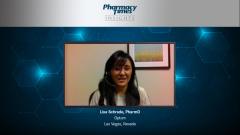
Prophylactic Treatment Options for Patients With Hemophilia A
Dr Schrade discusses the impact of prophylactic treatment for patients with hemophilia A.
Episodes in this series

Lisa Schrade, PharmD: Some of the limitations of the available products for prophylaxis therapy are coverage considerations from the payers. A lot of plans have certain restrictions and guidelines that they have in place. Maybe the best option for the patient isn’t something that aligns with what’s covered in the plan. So we have to try to think outside the box to get this patient what they need and still come into compliance with what the payers are requesting us to do. Most times they’re not based on clinical guide documentation from the providers, we’re able to get coverage for the patients. It does take a little bit more finesse on our part to try to make that happen, which is something that we take care of on the back end. We don’t let that burden the patient. We don’t want them to have to handle that part of it, because they’re already dealing with enough. So that’s one of the limitations just the payment.
They have certain expectations for us to meet, mostly in regard to the variants from the dosing. When you’re dealing with factor products, some of them can be very liberal with the dosing, with the 10% variants, which is the industry standard. Some of them are very restrictive, where they’ll only allow us to go 1% or 2% over the target dose for prophylaxis therapy. Emicizumab makes it a lot easier. It’s a cleaner dose. There are no variants and there are no assay selection. It’s basically the 4 available strengths, so it makes dosing a lot easier. And it’s a lot easier to make the payers understand that pricing structure as opposed to factor products, which have variable assays.
When I’m counseling patients about the initiation of prophylaxis treatment, we go over the basic stuff storage and handling the medication, what to expect when they initiate therapy, adverse effects, and drug interactions. But the big thing that I try to focus on with our patients, is adherence. Compliance is a real big concern with our hemophilia patients, and we really try to get pharmacokinetic studies if we can so we know where their peaks and troughs are happening and when we can expect a bleed, so we can adjust their intervals if needed. So that’s one of the biggest things sticking to the routine.
It’s really difficult with patients who are on standard half-life factor products because their dosing can be every other day, sometimes every day. When you’re trying to access a vein, and you’re continuously disrupting the skin, it starts to build up scar tissue and they have a harder time accessing the vein. Sometimes if you’re dehydrated, that can affect their ability to find a vein. Emicizumab makes it a lot easier because it is a subcutaneous injection, so the compliance is not as concerning with that one, although there are caveats to that as well. If they’re on the weekly dosing, usually the compliance is pretty good. If they start migrating to every other week, or every 28-day, sometimes we do have to give them little reminders to make sure they pick a set date. Or set a calendar reminder on their smartphone to give them an alarm so they remember to do the dosing.
So with factor, it’s demanding dosing, so sometimes they won’t infuse because it does take a lot. The whole setup, the preparation and the actual administration itself. And then with emicizumab, it’s not as demanding but because they do get a little bit more liberation with how frequently they have to inject. Then I start to see compliance issues that way because they’ll forget to do it.
Transcript edited for clarity.
Newsletter
Stay informed on drug updates, treatment guidelines, and pharmacy practice trends—subscribe to Pharmacy Times for weekly clinical insights.












































































































































































































